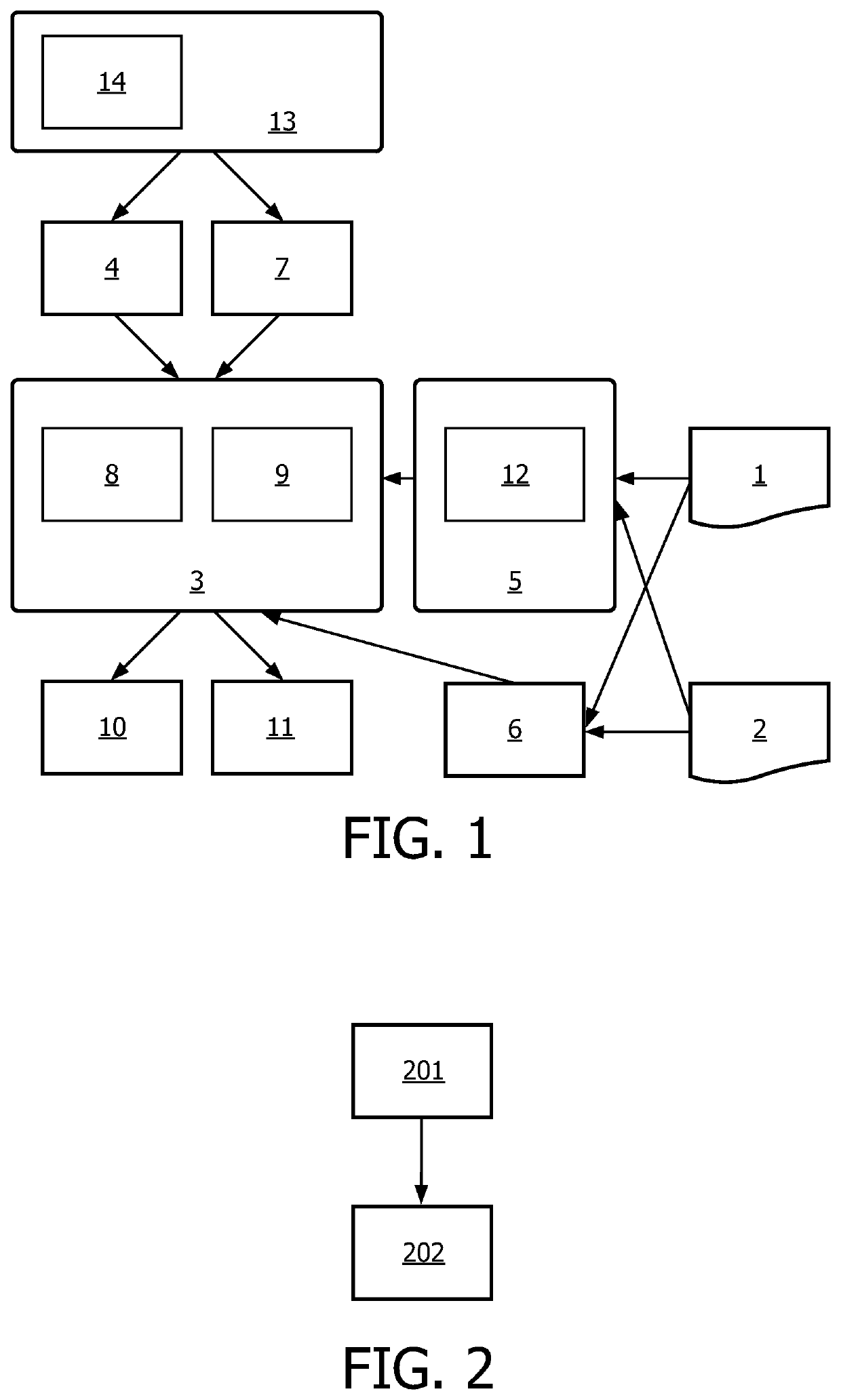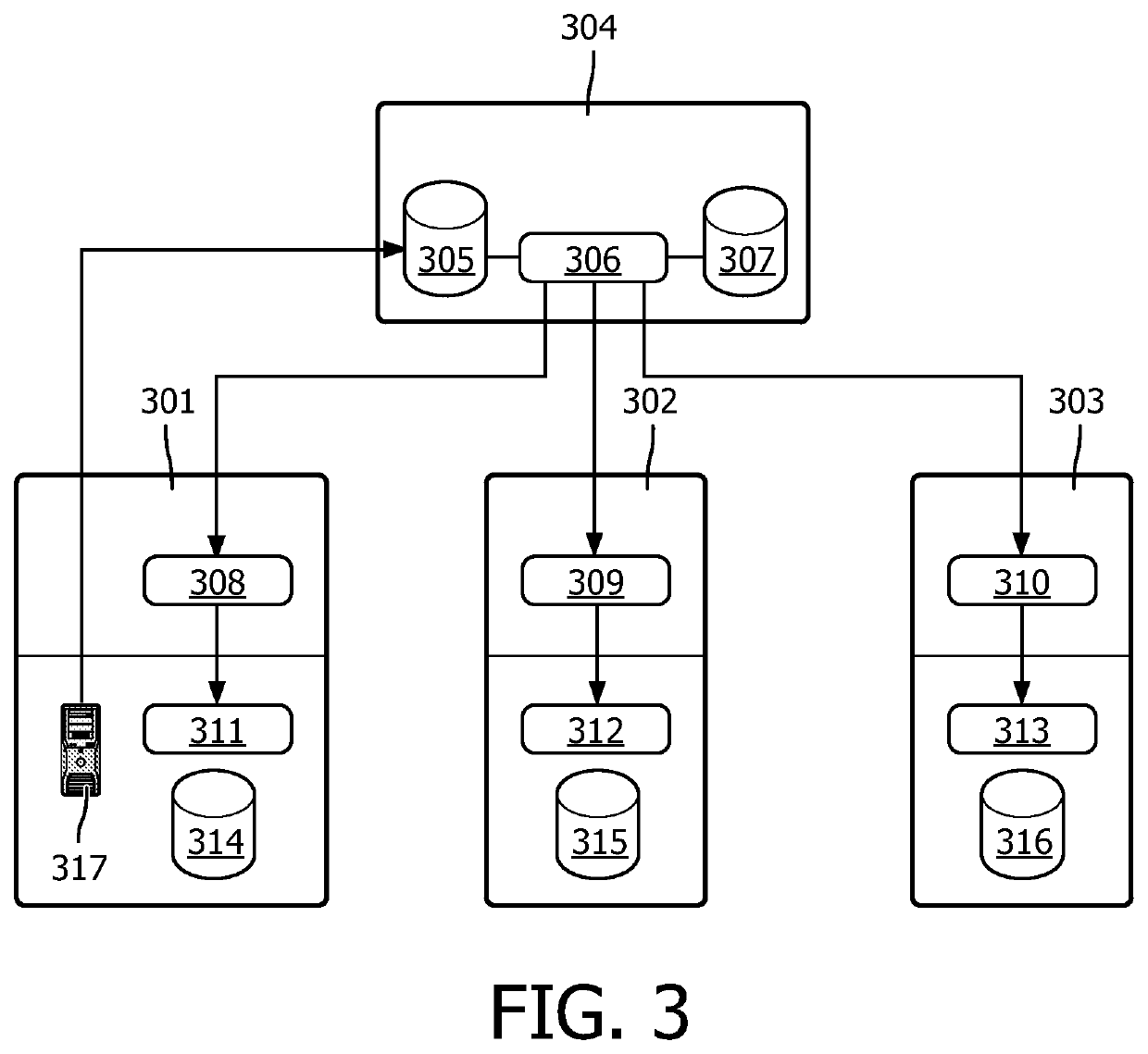Identity matching of patient records
a technology for matching patient records and records, applied in the field of identity matching of patient records, can solve the problems of high cost, impracticality of solution, and large amount of records submitted for manual review, and achieve the effects of reducing the amount of data processing, improving the matching process, and ensuring accuracy
- Summary
- Abstract
- Description
- Claims
- Application Information
AI Technical Summary
Benefits of technology
Problems solved by technology
Method used
Image
Examples
Embodiment Construction
[0031]In current approaches, if two records cannot be automatically linked or declared as different, they are placed on an exception list by the matching application and need to be reviewed by specialized registration personnel. The human intervention may entail manually comparing the two records to detect whether they belong to the same person or not. The registration personnel may also ask the patient if the records belong to him or her. It is often difficult and time-consuming to manually review and compare patient records describing many health episodes and spanning decades. This manual process is also error-prone, as people have relatively small attention windows and find it difficult to follow a large number of variables across many data sources. Also, it may be necessary to ask the patient for clarification, which is cumbersome.
[0032]The longer the exception list, the more time would be spent on manually reviewing records and eliminating false positives (records that seem to ...
PUM
 Login to view more
Login to view more Abstract
Description
Claims
Application Information
 Login to view more
Login to view more - R&D Engineer
- R&D Manager
- IP Professional
- Industry Leading Data Capabilities
- Powerful AI technology
- Patent DNA Extraction
Browse by: Latest US Patents, China's latest patents, Technical Efficacy Thesaurus, Application Domain, Technology Topic.
© 2024 PatSnap. All rights reserved.Legal|Privacy policy|Modern Slavery Act Transparency Statement|Sitemap


